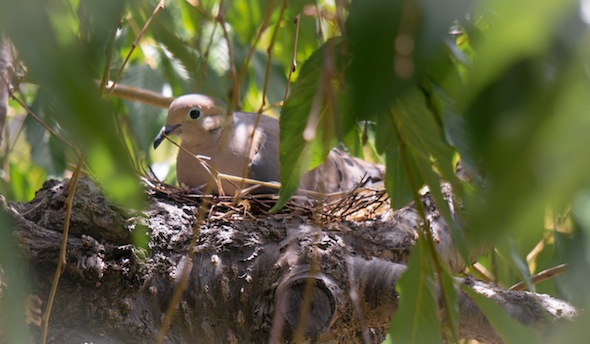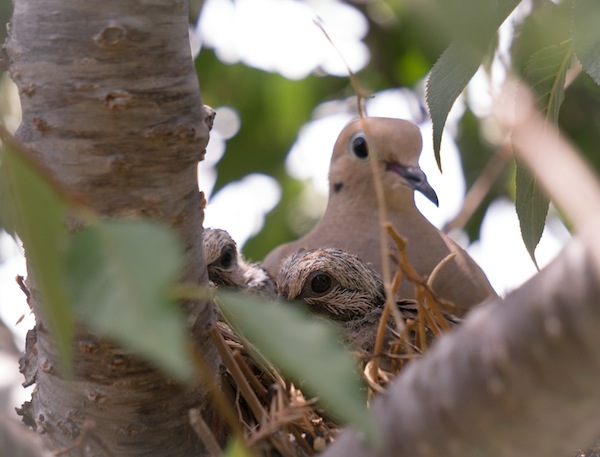
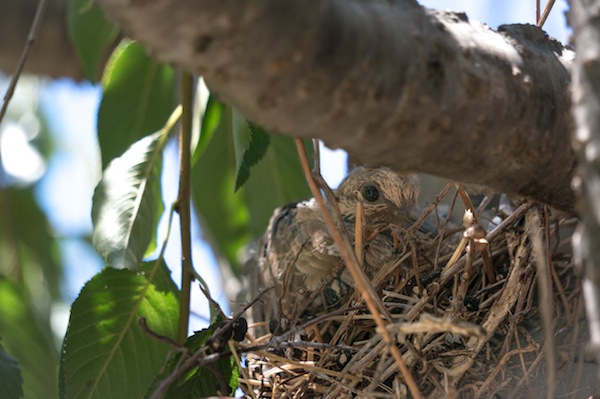
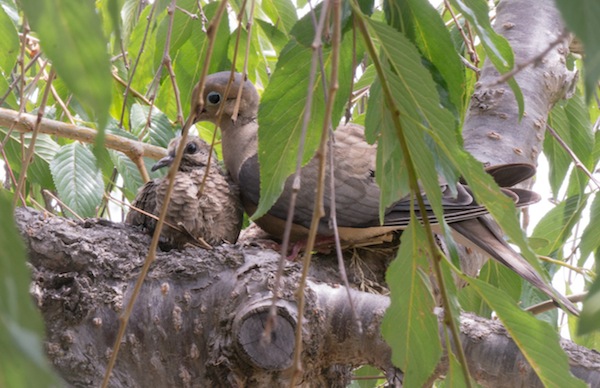
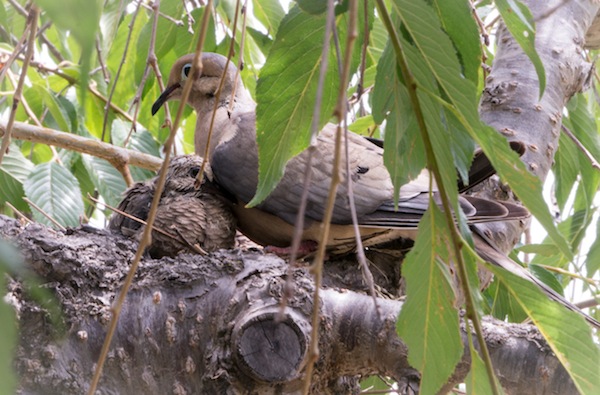
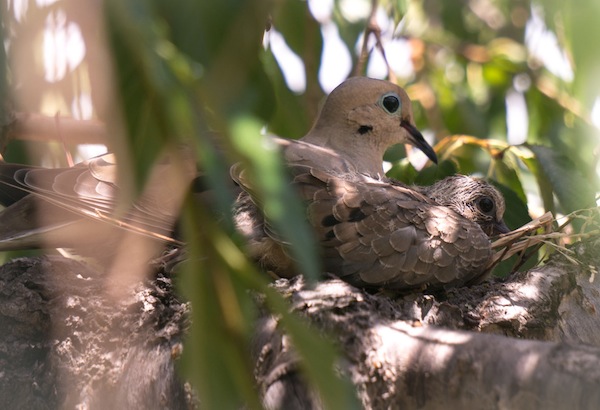
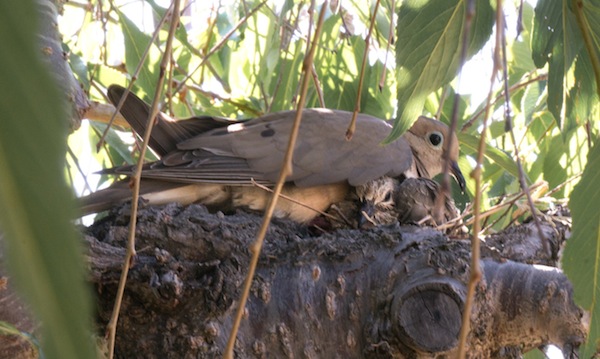
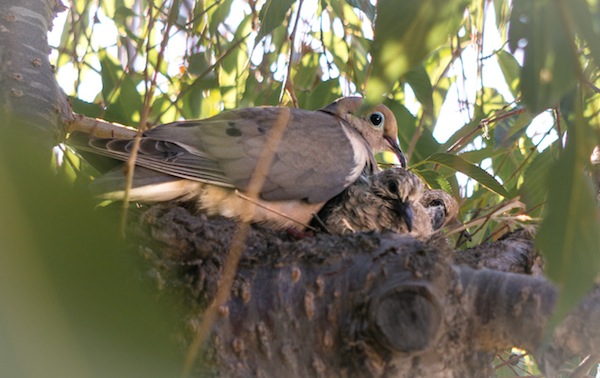

In late June, 2014, we noticed a flurry of activity outside our kitchen window. A pair of Mourning Doves were building a nest!
After several days of coordinated effort, the nest was ready and, at that point, all activity seemed to stop. For the next two weeks, all we could see was a bird sitting absolutely still (picture at the top of this page).
We learned that doves lay a pair of eggs, each about an inch long, and then incubate them continuously in the nest for 14 days. Again, it's a team effort; the father sits with the eggs during the day and the mother takes over in the evening.
We also discovered that the parent who is NOT in the nest stays nearby. A jay came and sat on the top branches of this tree, and was quickly shooed away by the other watchful parent.
Then, after two weeks of waiting, we saw the new arrivals - two little chicks, called squabs, had hatched!
It's likely that the babies were a few days old by the time we could see them. Within the next few days, they were walking around the nest and fluttering their wings.
And then one morning, the nest was empty.
We believe that they stayed fairly close by, and we wish them well.
Facts about
Mourning Doves
- They get their name from the gentle sound of their cooing, thought by some to sound like a lament.
- This familiar cooing sound radiates through the dove's skin when it inflates its throat without opening its beak.
- Nesting doves are not bothered by the presence of humans and will often build nests on or around houses. (I used a telephoto lens to take these pictures so as not to disturb them too much.)
- Among the most widespread birds in North America, the U.S. population is estimated at 350 million.
From the Cornell Lab of Ornithology,
All About Birds
(opens in a separate browser window or tab)
